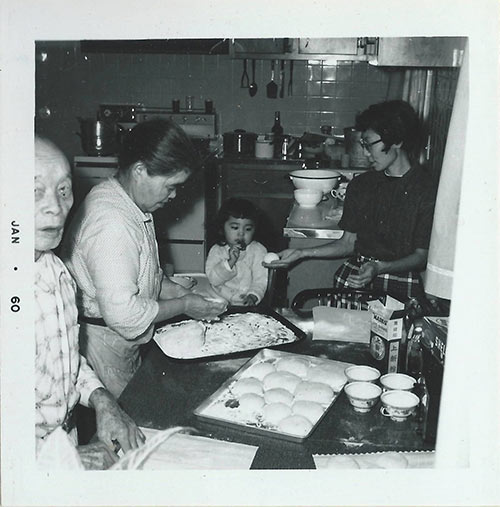Congratulations to these Affiliates on their recent accomplishments! Do you have kudos to share? Please send potential entries to Aaron Glavas, GlavasC@si.edu.
FUNDING
The National Endowment for the Humanities (NEH) announced $14.8 million in grants to support 253 humanities projects in 44 states, the District of Columbia, and Puerto Rico. An additional $47.5 million was awarded to fund 55 state humanities council partners. The following Affiliates are included in the awards:
Adler Planetarium and Astronomy Museum (Chicago, IL): $178,961
Extending Zooniverse.org’s online platform to allow individual crowdsourcing project teams to review, compare, and edit transcriptions, and to work directly with raw text data generated from community transcription projects.
Michigan State University Museum (East Lansing, MI): $5,968
The purchase of two storage cabinets for a recently acquired collection of 433 items from Europe and the United States that were made or used by, or that represent, the Romani people.
Ohio History Connection (Columbus, OH) $6,000
The purchase of archival supplies to preserve the 800 dolls in the recently donated Lillian M. Bartok Doll Collection.
Museo de Arte de Puerto Rico, Inc. (San Juan, Puerto Rico): $10,000
Development of a long-term preservation plan specific to the library and archives, physical relocation of collections, purchase of supplies, digital reformatting of VHS tapes, and preservation training for staff.
International Tennis Hall of Fame (Newport, RI): $6,000
A preservation assessment of a museum collection of approximately 30,000 artifacts housed in the historic Newport Casino, site of the first U.S. National Lawn Tennis Championship in 1881.
Fort Worth Museum of Science and History (Fort Worth, TX): $6,000
A preservation assessment of history, archival, and science collections related to Texas and the Southwest. The collections comprise more than 180,000 items, with emphasis on pre-Columbian, Native American, and ranch and agricultural life in Texas and the southwestern United States, as well as Fort Worth history.
Cape Fear Museum (Wilmington, NC) was awarded $3,000 from International Paper’s Riegelwood Mill and the International Paper Foundation. Funds will be used to enhance the Uplands Forest section of the Michael Jordan Discovery Gallery including hands-on, interactive components, construction materials, and print displays.
The Putnam Museum & Science Center (Davenport, IA) received a $200,000 endowment fund which will give the museum annual perpetual grants. From the estate of Louise Fidyke Potter McCarty-a grant of about $3,000 a year will be given to help support arts- and culture-related programs and projects.
AFL Telecommunications awarded a grant of $3,500 to The Children’s Museum of the Upstate location in Spartanburg, SC, to support after-school STEM education programs. The FIRST LEGO League program provides fourth through eighth graders the opportunity to learn more about science and engineering, and help spark an interest in STEM fields at a young age.
Springfield Museums (Springfield, MA) received $100,000 for literacy-based interactive exhibits in The Amazing World of Dr. Seuss Museum. The state grant will allow the museum to add several bilingual interactive exhibits.

Kay Simpson, president of the Springfield Museums, center, is joined by state legislators and representatives of the museums in praising a $100,000 state allocation for expansion of bilingual interactive exhibits for the Dr. Seuss Museum. (Peter Goonan / The Republican)
Bank of America presented $480,000 in grants to several nonprofits in the Philadelphia region in celebration of Giving Tuesday including $40,000 to the African American Museum in Philadelphia (Philadelphia, PA).
Abbe Museum (Bar Harbor, ME) received a $10,000 Enterprise Grant from the Maine Office of Tourism. The funds will be used to expand the reach of the Abbe Museum Indian Market – both before and after the May event – contributing to the wider tourism goals of the region. Projects include a podcast and online press room.
RCB Bank is partnering with the Cosmosphere International Science Education Center & Space Museum (Hutchinson, KS) to award a ten camp scholarship to students in sixth through eighth grade to attend a Cosmosphere Camp this summer.
AWARDS AND RECOGNITION
The USS Constitution Museum (Charlestown, MA) has been selected to receive a pro bono consulting study by Harvard Business School Association of Boston’s Community Action Partners (CAP). The study is scheduled to begin this fall. For the past 18 months the USS Constitution Museum has been working with the National Park Service, U.S. Navy, and Waltham-based design firm Sasaki Partners on a plan to make the Charlestown Navy Yard experience more unified, engaging, and relevant. The CAP study will look at the museum’s proposal to move to the Hoosac Warehouse next to USS Constitution.
The Abbe Museum received an excellence in marketing award from the DownEast Acadia Tourism Association (DART) for its new Abbe Museum Indian Market. DART recognized the market as an important event for the region’s tourism and creative economies.
Hyperallergic revealed its’ Best of 2018: Top 20 Exhibitions Across the United States featuring Unsettled at the Anchorage Museum (Anchorage, AK).
Conner Prairie Interactive History Park (Fishers, IN) has been named a Site of Conscience by the International Coalition of Sites of Conscience. Conner Prairie is now one of more than 250 members across 65 countries to be honored for its high standards and initiatives to connect history to current events.







 For the past two years
For the past two years 